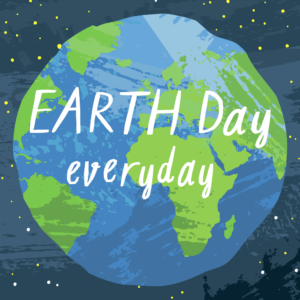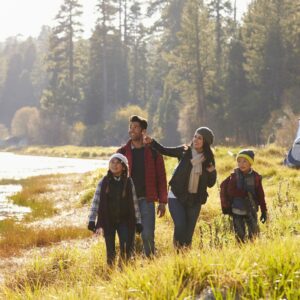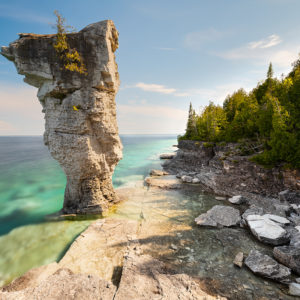The whirlwind year: a spring-to-spring retrospective at Nature Canada
But we were never on our own even in the most challenging moments: our supporters and partners were with us every inch of the way. Thanks to your help, this whirlwind year has seen some very heartening wins for nature.
Bird Friendly Cities
Our Bird Friendly Cities program is powered by local volunteer groups who want to take action with municipalities to protect bird populations.
Spring 2022 saw a string of successes for this program, which works with municipalities and local “bird teams” to make urban places safe havens for birds—and to educate the general public on how to reduce threats to bird populations.
Eight municipalities received certification last spring, from Halton Hills and Peterborough in Ontario, to Lions Bay and Saanich in B.C. More cities were added in the summer and fall of 2022, and now (as of April 2023); we have a total of 20 municipalities certified as “Bird Friendly.” (Federal Minister of the Environment Steven Guilbeault celebrated this important milestone during the recent “Nature COP”—more below.)
Protecting 30 percent of lands and waters by 2030
It was a year of international nature conferences in Canada—and a year that showed how ordinary voices could be heard to halt nature loss.
In the fall of 2022, nature lovers were looking ahead to the U.N. biodiversity conference (“NatureCOP”), to be held in Montreal in December, and wondering how they could demonstrate to Canadian decision-makers that we needed real action at the conference.
From the coasts of BC to the Maritimes, over thirty outreach events were held to inspire and engage people to send messages of hope to halt and reverse nature loss. Thousands of people attended, and their letters of hope and pieces of art were all collected. We are grateful to each and every one for standing together to show support for the protection of our lands, waters and wildlife. On your behalf, Nature Canada staff delivered the thousands of messages to Prime Minister Trudeau. In his opening address at NatureCOP, the prime minister quoted directly from two of them.
I’m counting on you and your government to show leadership in the area of biodiversity and particularly in the protection of birds and their habitats.

Thousands of messages of hope were collected and delivered to Prime Minister Trudeau at NatureCOP.

Our network of local groups, the Nature Network, helped organize events and gather the messages.
Most importantly, NatureCOP itself was a success. Delegates signed the Kunming-Montreal agreement, which enshrined the commitment to protect 30 percent of the world’s lands and waters by 2030—and also introduced a new goal to restore 30% of degraded land and waters within the same timeframe.
Just a short six weeks after COP15, ocean defenders from all over the world converged in Vancouver for the Fifth International Marine Protected Areas Congress (IMPAC5), which saw several more conservation wins. The federal government confirmed that Canada would not authorize seabed mining in areas under its jurisdiction. What’s more, the government announced an agreement with coastal First Nations to cooperatively manage the huge marine protected area called Tang.ɢwan — ḥačxwiqak — Tsig̱is. At 133,000 square kilometres, this ecological gem covers 2.3 percent of all ocean area in Canada and encompasses key undersea features like seamounts and hydrothermal vents. It supports an astonishing array of ocean life, including the rare ghost octopus, sea cucumbers, sharks, blue whales and threatened orcas.
We are thankful to members like you and our funding partners who supported our efforts to achieve protection for this amazing seascape.
Supporting Indigenous conservation
Self-established Indigenous Protected and Conserved Areas (IPCAs) help defend nature and cultural traditions from mining, logging, and development. In the summer last year, our naturalist team headed north to Eeyou Istchee, on the eastern coast of James Bay, to conduct bird and habitat surveys in collaboration with our Cree partners. Our work there has focused on species and groups of species that are of strong cultural value to the Cree: shorebirds, sea ducks, seabird colonies, and species at risk. Last summer’s trip consolidated the many friendships we have in Eeyou Istchee and laid the groundwork for more fieldwork to come.
It’s all in the service of helping create Indigenous Protected and Conserved Areas (IPCAs) in the James Bay region that will also help protect iconic species like caribou, lynx and wolves. This collaborative work proceeds in parallel with our partnership with Sakitawak IPCA in Île-à-la-Crosse, Saskatchewan. By working with Indigenous communities to conserve the boreal forest, we are also helping them to protect culturally important species like freshwater fish, old-growth pine and woodland caribou.
Protecting intact forests
Speaking of forests, they constitute some of our greatest allies in tackling climate change, and scientists are raising the alarm about the impacts of industrial logging on their carbon-storing capacity.
In the fall, 90 international scientists signed an open letter to Prime Minister Justin Trudeau, calling for the government to better protect Canada’s climate-critical primary forests and review how it reports logging’s carbon emissions. “We strongly recommend the Government of Canada… protect primary forests and older forests,” wrote the scientists, “and to make their protection a key pillar of its natural climate solutions commitments.”
Part of this protection means improving the accuracy and transparency in how the logging industry reports greenhouse gas emissions—the subject of Nature Canada’s recent report Lost in the Woods.
We made it! Thanks to YOU!
And to top off this whirlwind year, we just wrapped up our Nature on the Hill Day (March 8th), which annually brings together nature groups to talk with parliamentarians. This year, 64 nature groups participated in 40 meetings with MPs to deliver the message that Canada needs a tangible action plan to halt and reverse nature loss. At the same time, over 10,000 supporters echoed this message by sending our action letter to the Minister of Environment.
Now, as the birds return once again, we can look back with pride at what we’ve accomplished. We’d like to thank Scotiabank for its recent donation of up to $250,000 in celebration of Earth Day. Scotiabank is inspiring customers to switch from paper statements to electronic statements to help protect the environment.
And a big thanks to our members and supporters who make our important work possible each and every day. From the ocean depths off BC, to the wetlands and forests around James Bay, to the grasslands of the Prairies, to the shorelines of Newfoundland, to the special green spaces closer to home—we salute you!




